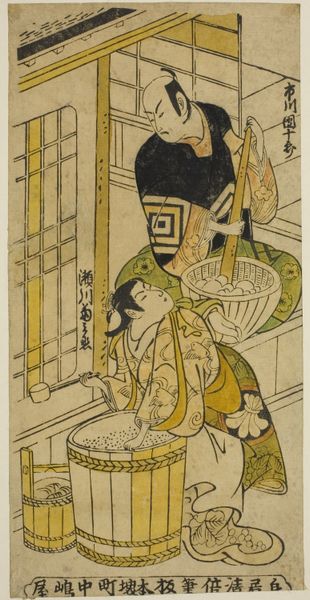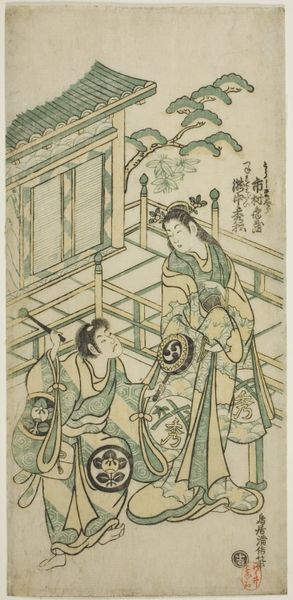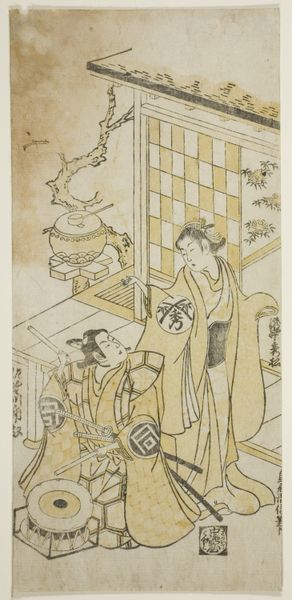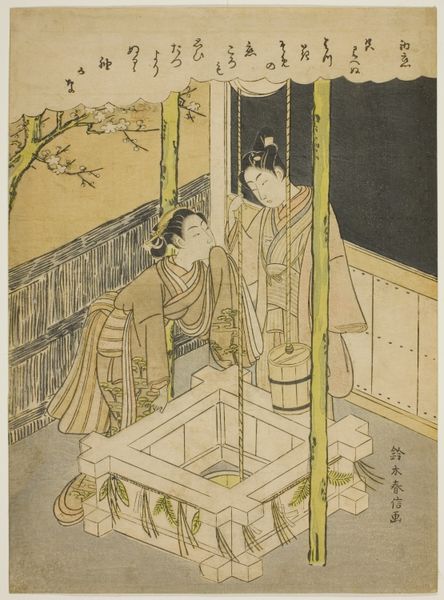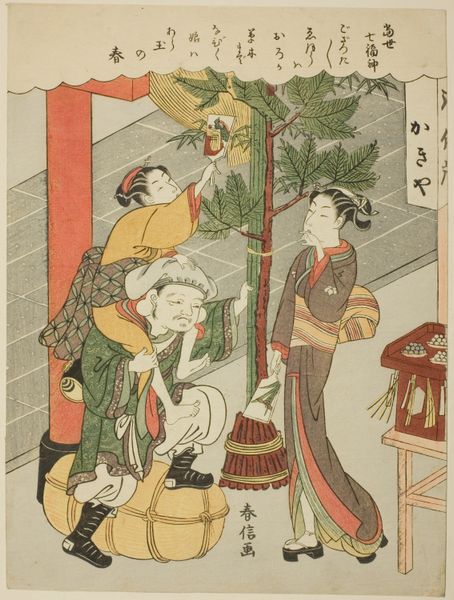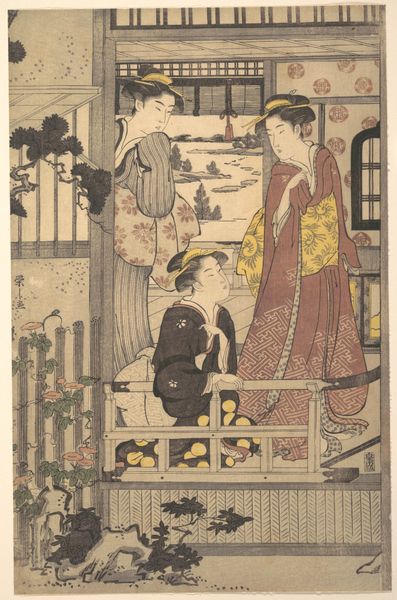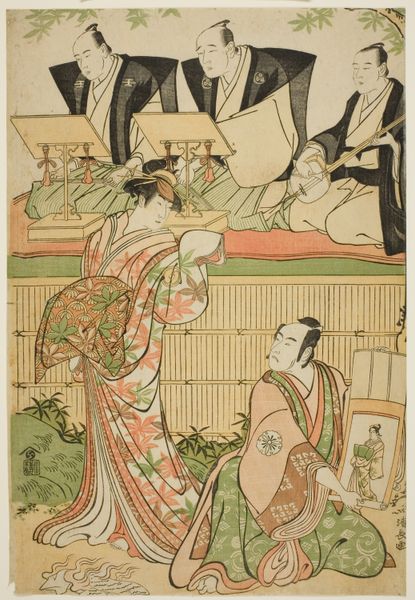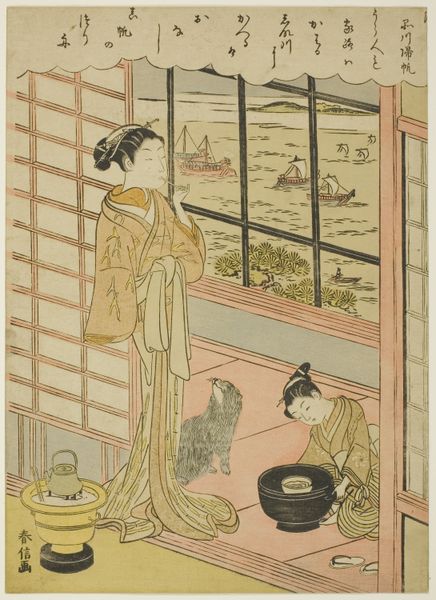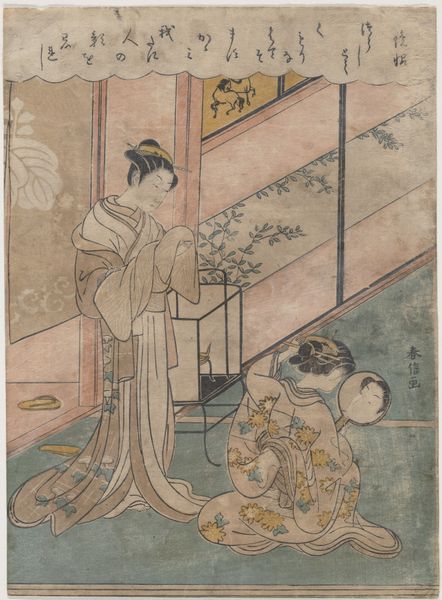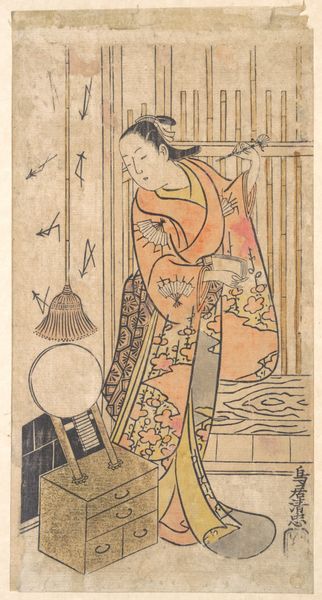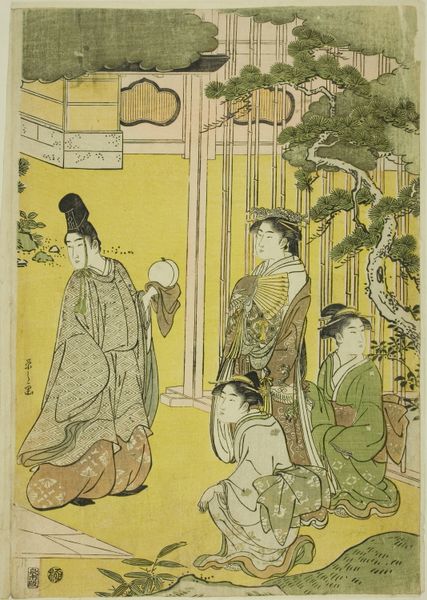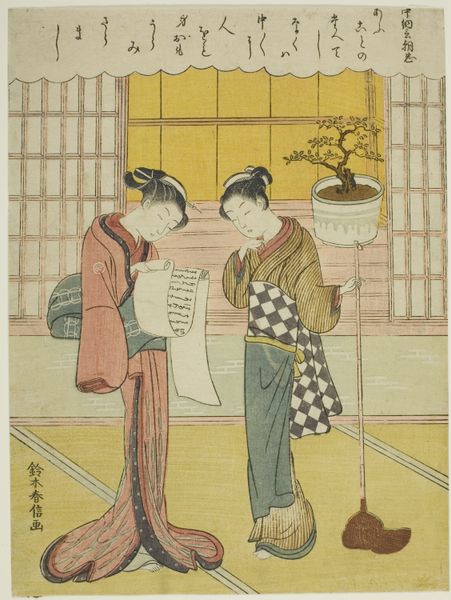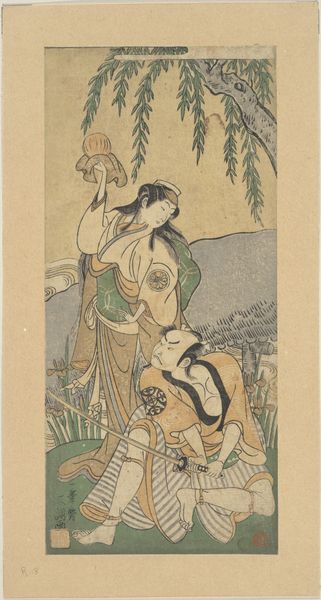
The Actors Ichimura Uzaemon VIII as Oguri Hangan and Segawa Kikunojo I as Terute no Mae in the play "Mangetsu Oguri Yakata," performed at the Ichimura Theater in the eighth month, 1747 1747
0:00
0:00
drawing, print, ink, woodblock-print
#
portrait
#
drawing
# print
#
asian-art
#
ukiyo-e
#
ink
#
woodblock-print
#
genre-painting
Dimensions: 32 × 15.1 cm (12 9/16 × 5 15/16 in.)
Copyright: Public Domain
This woodblock print by Torii Kiyonobu II, made in 1747, captures actors in the play "Mangetsu Oguri Yakata," and is rich with symbolic meaning, deeply rooted in the cultural and emotional expressions of the time. Note the actors' garments, adorned with family crests, or "kamon." These symbols, far from mere decoration, served as potent identifiers, emblems of lineage, status, and the collective memory of their clans. These kamon echo across time, reminiscent of heraldic symbols in medieval Europe, each bearing a weight of history and identity. Consider the fan held by one of the actors, a recurring motif not only in Japanese art but also in various cultures throughout history, where it symbolizes power, authority, or even flirtation, evolving from a practical tool to a complex signifier of social and emotional states. These motifs echo through history, a testament to the enduring human need to express identity and emotion through symbols. As we peel back the layers of meaning, we begin to understand how symbols carry the weight of history and identity, continuously resurfacing and evolving through time.
Comments
No comments
Be the first to comment and join the conversation on the ultimate creative platform.
